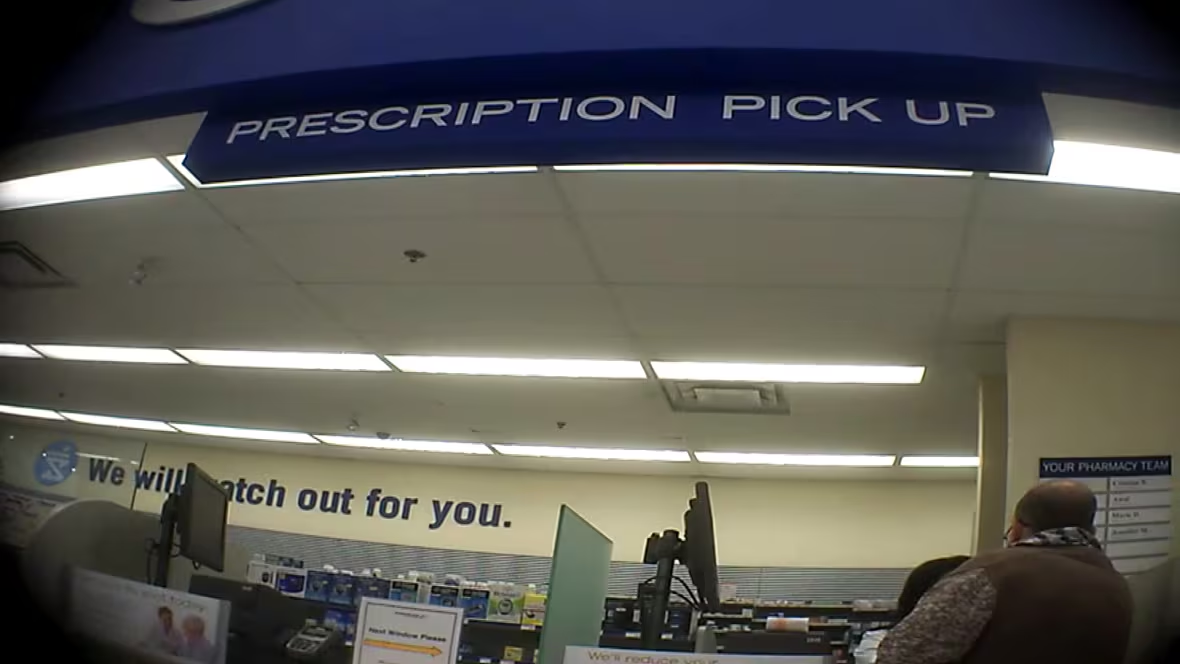Pharmacy errors: How often do they happen? Nobody knows
A CBC Marketplace investigation finds that while mistakes can be serious, hardly anyone is tracking them

If a pharmacist gives you the wrong drug or dose, it can be dangerous or even deadly. But how often does it happen in Canada? A CBC News/Marketplace investigation reveals that nobody knows.
While close to 38,000 pharmacists dispense more than half a billion prescriptions in Canada every year, there is no national tracking system, and little mandatory reporting, for pharmacists who make mistakes.

In a months-long investigation that was the largest of its kind in Canada, Marketplace looked at pharmacy errors across the country.
The Marketplace investigation, Dispensing Danger, airs Friday, January 23 at 8 p.m. (8:30 p.m. NT) on CBC Television and online.
Follow Marketplace’s continuing coverage of this investigation all week on cbcnews.ca.
More serious errors emerge
When Sandra Tkaczuk of Baltimore, Ont., filled her prescription for anxiety medication last February, the pharmacist dispensed the wrong dose. She was supposed to receive one-mg pills of clonazepam; the pills she was given were only 0.5 mg.
"It escapes me how this can happen," Tkaczuk says.
"I went to emergency twice because I thought I was having a heart attack," she says. "It just feels like thunder in your chest. And you can’t control it."

"I isolated myself in the back bedroom and stayed there for months."
She no longer trusts pharmacists, and she checks all her prescriptions. She also started a Facebook page to warn others that serious errors can happen.
Since news of the Marketplace investigation first aired, dozens of people have come forward with their stories of pharmacy errors, saying they were dispensed the wrong drug or the wrong dose, or that drug interactions were never discussed.
One woman wrote to Marketplace saying her pharmacist never told her that an anti-seizure medication would interfere with the oral contraceptive she was taking. She became pregnant.
Another viewer wrote about his experience when a pharmacy gave him a blood-pressure medication instead of the anti-inflammatory drug his doctor had prescribed.
His condition worsened, he wrote. In pain and unable to work, he lost his job.
"I've lost my career of 30 years and have been placed on a disability pension, and although I'm trying hard to get better I don't know if I'll ever get my right leg back," he wrote.
"May no one have to go through this."
For its investigation, Marketplace took hidden cameras into 50 pharmacies in nine cities to document whether pharmacists follow important protocols and catch potentially dangerous drug interactions.
The testers asked for a Schedule 2 drug, which doesn’t require a prescription but is kept behind the counter because pharmacists are supposed to counsel people who ask for it, according to guidelines set by various Colleges of Pharmacists across the country.
More than half of the pharmacies tested failed to provide any counselling. None provided warnings or flagged possible interactions with other medications.
Pharmacists believe system is safe
While pharmacy errors happen across the country, only Nova Scotia has made tracking tools mandatory. Saskatchewan is running a pilot project involving a limited number of pharmacies. Prince Edward Island began a pilot project, only to abandon it after a year.
Jane Farnham, chair of the Canadian Pharmacists Association, says there’s little reason for people to be concerned.
"We have, to my knowledge and to my belief, one of the safest medication systems in the world," she says.

In Nova Scotia, where pharmacies are required to have error-reporting tools in place, there have been 75,000 medication errors reported in the last three years, according to the provincial regulatory college. These errors include "near misses," where errors were caught before the drug was dispensed, but are documented to help avoid future problems.
MacKinnon, who helped create the Nova Scotia system, says fear may be a factor in other provinces’ reluctance to embrace reporting programs.
"An ongoing theme in health care has been fear related to errors and safety, and that’s really, unfortunately, the dark history of health care," says MacKinnon.
"How do we try to create a system that you’re not scared for your job in reporting errors?"
Up to provinces to establish system
The Institute for Safe Medication Practices Canada, an independent non-profit, has been working toward a national tracking and mandatory reporting system for pharmacies to increase patient safety.
"With national reporting, over time, we can see trends, and more openly talk about errors," says Certina Ho, project lead at the institute.

Common mistakes, according to the institute, include substituting drugs that sound or look the same or misreading handwritten prescriptions.
Often these errors are caught, but when they’re not, the results can be devastating.
Have you experienced a pharmacy error? Marketplace wants to hear from you. Email marketplace@cbc.ca.